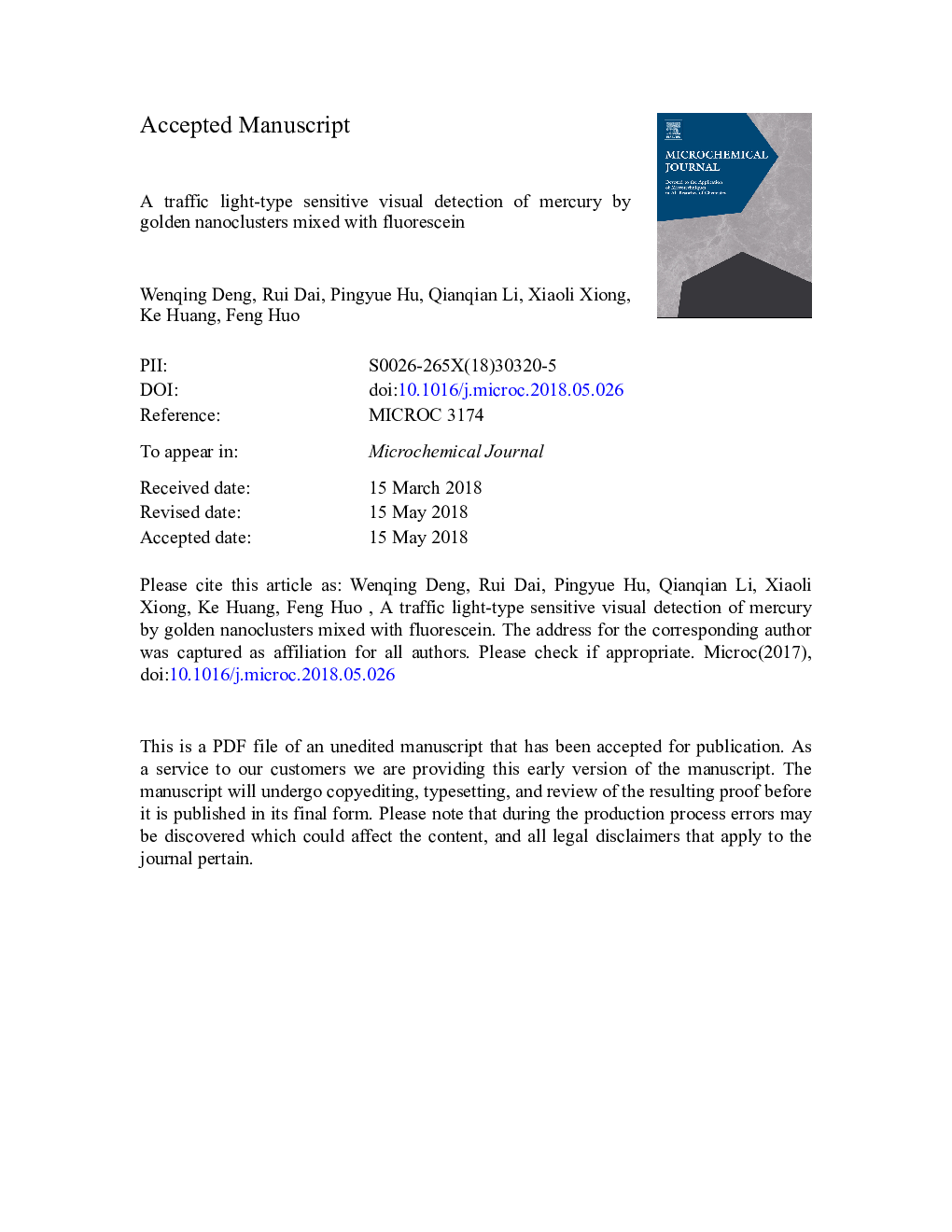| Article ID | Journal | Published Year | Pages | File Type |
|---|---|---|---|---|
| 7640161 | Microchemical Journal | 2018 | 24 Pages |
Abstract
A novel colorimetric sensor based on red-emitting bovine serum albuminâgolden nanoclusters (BSA-AuNCs) and green-colored fluorescein that exhibited traffic light-type color change was developed for ratiometric and visual detection of mercury (Hg). In the presence of Hg2+, the red fluorescence from BSA-AuNCs was quenched while the green fluorescein was inert thus as a reference. And it presented traffic light-type (red, yellow and green) color in the low, middle and high concentration of Hg2+. A potential mechanism was investigated by Energy Dispersive Spectrometer (EDS) and X-ray photoelectron spectroscopy (XPS). The selective quenching mechanism may be due to the formation of gold amalgam bonds between BSA-AuNCs and Hg2+. A linear correlation was constructed for Hg2+ in the concentration range of 10-500â¯Î¼gâ¯Lâ1. A limit of detection (LOD) of 7.4â¯Î¼gâ¯Lâ1 and a relative standard deviation (RSD, nâ¯=â¯7) of 0.4% were obtained, which can be used to monitor the concentration of Hg2+. In visual detection, as low as 0.1â¯Î¼gâ¯mLâ1 of Hg2+ can be easily discriminated from the blank with the naked eye. The proposed method was validated by analysis of certified environment and food samples with satisfactory results.
Related Topics
Physical Sciences and Engineering
Chemistry
Analytical Chemistry
Authors
Wenqing Deng, Rui Dai, Pingyue Hu, Qianqian Li, Xiaoli Xiong, Ke Huang, Feng Huo,
